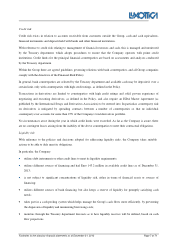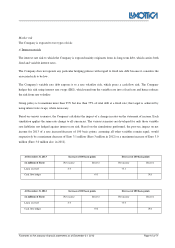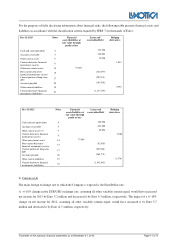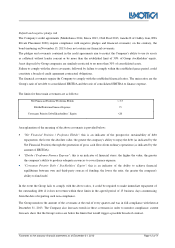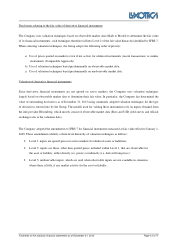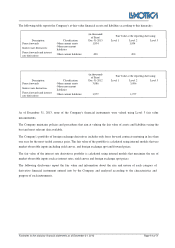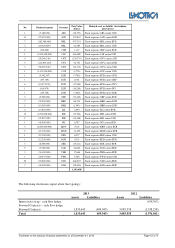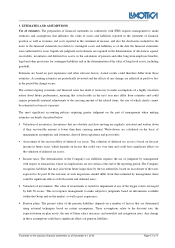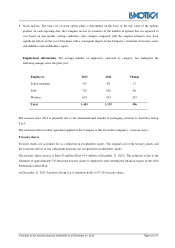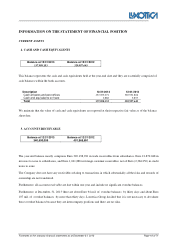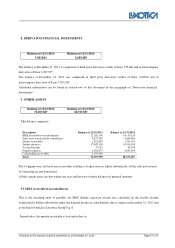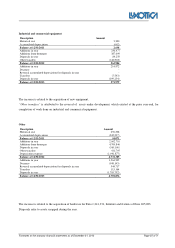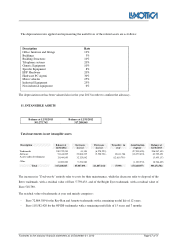LensCrafters 2013 Annual Report Download - page 184
Download and view the complete annual report
Please find page 184 of the 2013 LensCrafters annual report below. You can navigate through the pages in the report by either clicking on the pages listed below, or by using the keyword search tool below to find specific information within the annual report.
Footnotes to the statutory financial statements as of December 31, 2013 Page 17 of 71
3. ESTIMATES AND ASSUMPTIONS
Use of estimates. The preparation of financial statements in conformity with IFRS requires management to make
estimates and assumptions that influence the value of assets and liabilities reported in the statement of financial
position as well as revenues and costs reported in the statement of income, and also the disclosures included in the
notes to the financial statements in relation to contingent assets and liabilities as of the date the financial statements
were authorized for issue. Significant judgment and estimates are required in the determination of allowances against
receivables, inventories and deferred tax assets, in the calculation of pension and other long-term employee benefits,
legal and other provisions for contingent liabilities and in the determination of the value of long-lived assets, including
goodwill.
Estimates are based on past experience and other relevant factors. Actual results could therefore differ from those
estimates. Accounting estimates are periodically reviewed and the effects of any change are reflected in profit or loss
in the period the change occurs.
The current ongoing economic and financial crisis has made it necessary to make assumptions of a highly uncertain
nature about future performance, meaning that actual results in the next year may differ from estimates and could
require potentially material adjustments to the carrying amount of the related items, the size of which clearly cannot
be estimated or forecast at present.
The most significant accounting policies requiring greater judgment on the part of management when making
estimates are briefly described below.
• Valuation of inventories. Inventories that are obsolete and slow-moving are regularly reviewed and written down
if their recoverable amount is lower than their carrying amount. Write-downs are calculated on the basis of
management assumptions and estimates, derived from experience and past results;
• Assessment of the recoverability of deferred tax assets. The valuation of deferred tax assets is based on forecast
income in future years, which depends on factors that could vary over time and could have significant effects on
the valuation of deferred tax assets;
• Income taxes. The determination of the Company's tax liabilities requires the use of judgment by management
with respect to transactions whose tax implications are not certain at the end of the reporting period. The Company
recognizes liabilities that may arise from future inspections by the tax authorities, based on an estimate of the taxes
expected to be paid. If the outcome of such inspections should differ from that estimated by management, there
could be significant effects on both current and deferred taxes;
• Valuation of investments. The value of investments is tested for impairment if any of the trigger events envisaged
by IAS 36 occurs. This test requires management to make subjective judgments based on information available
within the Group and on the market, as well as past experience;
• Pension plans. The present value of the pension liabilities depends on a number of factors that are determined
using actuarial techniques based on certain assumptions. These assumptions relate to the discount rate, the
expected return on plan assets, the rate of future salary increases, and mortality and resignation rates. Any change
in these assumptions could have significant effects on pension liabilities.


